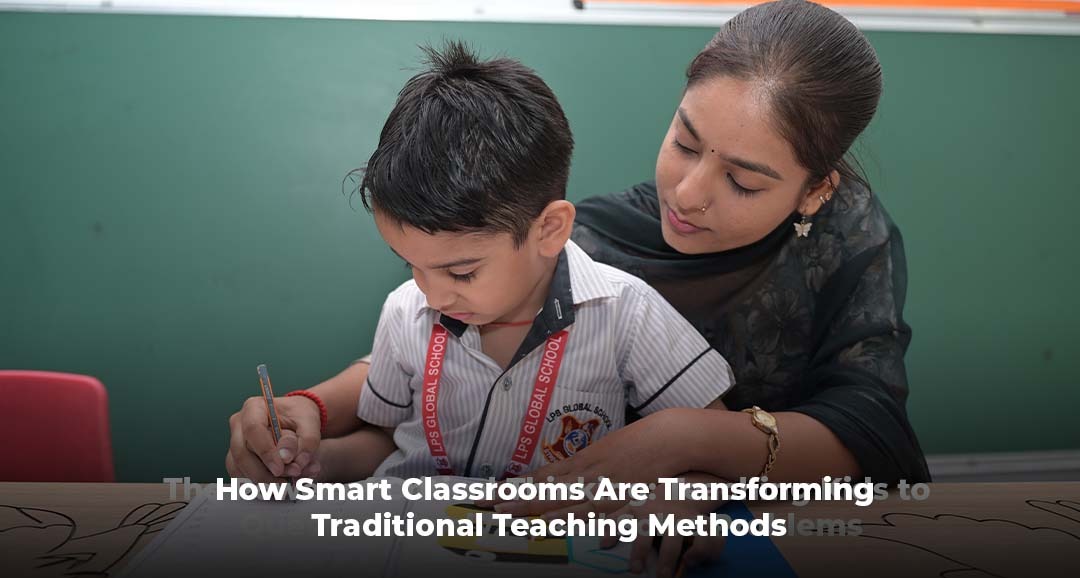Introduction:
The world of education is evolving rapidly, embracing new technologies and methodologies to better prepare students for the future. At LPS Global School, the Best International School in Noida, where one of the most significant advancements in this domain is the integration of smart classrooms into traditional teaching methods. These technologically advanced learning environments are revolutionizing how educators teach and how students learn, bridging the gap between conventional and modern education.
The Concept of Smart Classrooms
A smart classroom is equipped with state-of-the-art technology such as interactive whiteboards, projectors, tablets, and digital content platforms. These tools work together to create an engaging, dynamic, and personalized learning experience for students. The shift from chalkboards to smartboards symbolizes a broader transformation that prioritizes interactivity, collaboration, and real-time feedback.
Enhancing Student Engagement
One of the primary benefits of smart classrooms is their ability to captivate students’ attention. Multimedia tools such as videos, animations, and simulations make even complex subjects more understandable and appealing. For instance, a biology lesson about the human circulatory system can come alive through 3D models and interactive diagrams, helping learners grasp intricate concepts effortlessly.
Encouraging Collaborative Learning
Traditional classrooms often focus on individual learning, but smart classrooms promote collaboration among students. Features like cloud-based platforms allow learners to work together on projects in real time, regardless of their physical location. This approach fosters teamwork, communication, and problem-solving skills—essential traits for success in the modern world.
Personalized Learning Experiences
Smart classrooms cater to the diverse learning needs of students by enabling personalized instruction. Advanced software can track individual progress, identify strengths and weaknesses, and suggest tailored content to bridge knowledge gaps. This ensures that every learner gets the attention and resources they need to excel.
Real-Time Assessment and Feedback
Gone are the days when students had to wait weeks to receive feedback on their performance. Smart classrooms enable real-time assessment through quizzes, polls, and interactive activities. Teachers can instantly identify areas where students are struggling and adjust their teaching methods accordingly. This immediate feedback loop enhances both teaching efficiency and student understanding.
Integrating STEM Education
Smart classrooms are particularly effective in promoting STEM (Science, Technology, Engineering, and Mathematics) education. Tools like coding platforms, robotics kits, and virtual labs provide hands-on learning experiences that ignite curiosity and foster innovation. By making STEM subjects more accessible and engaging, smart classrooms prepare students for careers in these high-demand fields.
Developing Critical Thinking Skills
The use of technology in smart classrooms goes beyond memorization and rote learning. Interactive lessons and problem-solving activities encourage students to think critically and creatively. For instance, a history class can include debates on historical events using virtual timelines and primary source documents, pushing learners to analyze and interpret information rather than simply recalling facts.
Encouraging Global Perspectives
Through smart classrooms, students can connect with peers and educators from around the world. Virtual exchange programs, online seminars, and global collaboration projects broaden their horizons and expose them to diverse cultures and perspectives. This global outlook is invaluable in preparing learners for an interconnected world.
Empowering Educators
Smart classrooms are not just transforming student learning; they are also empowering teachers to become more effective and innovative. Advanced tools simplify lesson planning, automate administrative tasks, and provide access to a wealth of digital resources. This allows educators to focus more on teaching and less on paperwork.
Promoting Sustainability
The integration of digital tools in smart classrooms contributes to environmental sustainability by reducing the reliance on paper-based materials. E-books, digital assignments, and online tests minimize paper consumption, aligning education with global sustainability goals.
Preparing Students for the Future
Incorporating technology into the classroom equips students with digital literacy skills essential for the 21st-century workforce. Familiarity with tools like data visualization software, coding platforms, and collaborative tools gives learners a competitive edge in higher education and beyond.
Addressing Challenges
While the benefits of smart classrooms are numerous, there are challenges that schools must address to maximize their potential. These include ensuring adequate training for teachers, maintaining infrastructure, and addressing the digital divide to ensure that all students have equal access to technology.
The Role of Affordability
Making smart classrooms accessible is crucial for their widespread adoption. Affordable education institutions are finding innovative ways to integrate technology without significantly increasing costs. By leveraging grants, partnerships, and open-source tools, schools can provide high-quality, technology-driven education to a broader audience.
Building Community Engagement
Smart classrooms also play a role in strengthening community ties. Parent-teacher communication apps allow families to stay informed about their child’s progress, fostering a collaborative approach to education. Additionally, schools can use technology to involve the community in various initiatives, creating a supportive ecosystem for learners.
The Path Forward
The transformation of traditional teaching methods through smart classrooms is not just a trend; it is a necessity in a world that increasingly values innovation, adaptability, and lifelong learning. By embracing this change, schools are setting a benchmark for excellence in education and preparing students to thrive in a rapidly changing world.
Conclusion:
The integration of smart classrooms represents a significant leap forward in the field of education. At LPS Global School, the Best Academic School in Noida where by enhancing engagement, fostering collaboration, and preparing students for future challenges, these advanced learning environments are reshaping the way knowledge is imparted and acquired. As more schools adopt this model, the future of education looks brighter, more inclusive, and better equipped to meet the needs of the 21st century.

